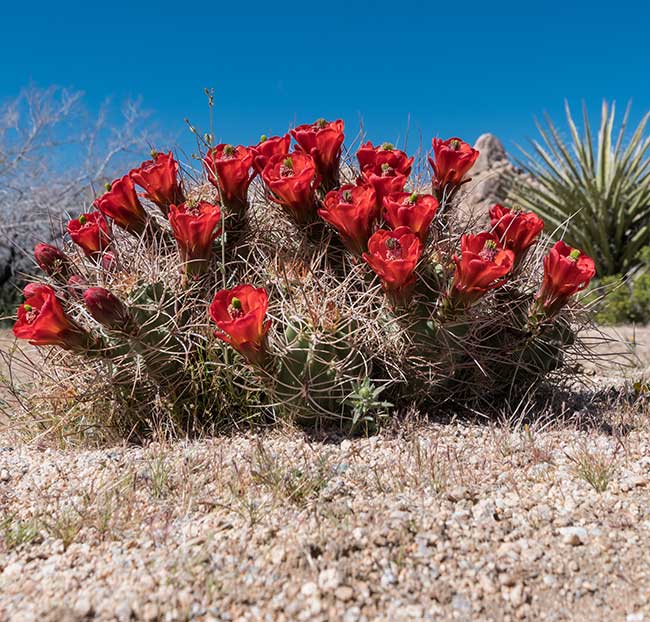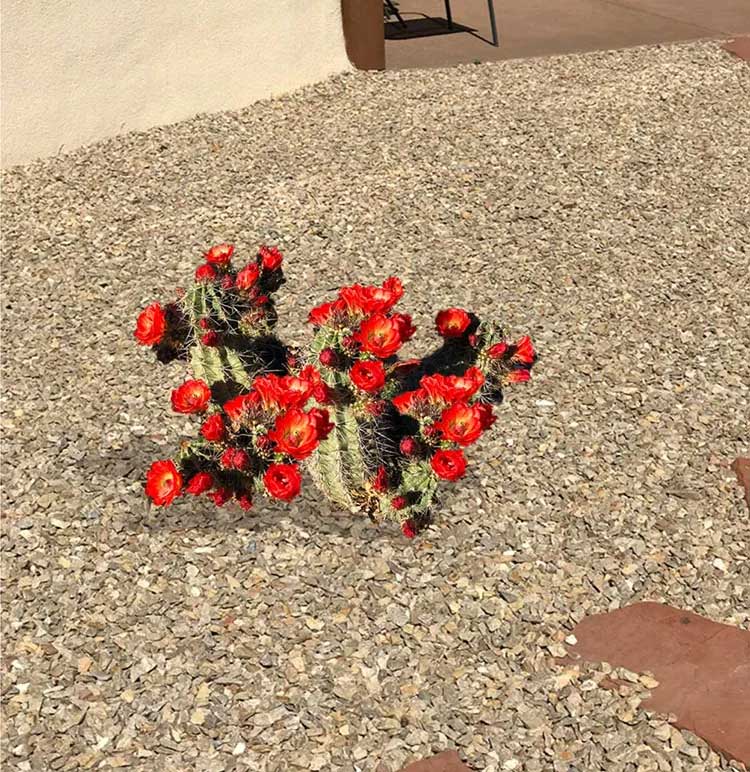Last updated on December 7th, 2024 at 06:36 am
Growing Claret Cup Cactus: A Comprehensive Guide
Looking for a stunning addition to your garden that combines beauty and hardiness? Meet the Claret Cup Cactus Echinocereus triglochidiatus. In the Hedgehog family.
Native to the arid regions of the southwestern United States and northern Mexico, this vibrant cactus draws gardeners for its striking red flowers and low-maintenance nature. Whether you’re an experienced gardener or a newbie, the Claret Cup Cactus offers a delightful way to add color and texture to your space.
Optimal Growing Conditions
To grow a healthy Claret Cup Cactus, you need to mimic its natural habitat. These cacti thrive in conditions that many plants would find unbearable. Let’s explore what it takes to create an ideal home for your plant.
Sunlight Requirements
Claret Cup Cacti bask in the sunlight. They need full sun to produce those brilliant red blooms. Ideally, place your cactus where it can get at least six hours of direct sunlight each day. Think of them as sunbathers who enjoy soaking up every ray. Too little sunlight can result in stunted growth and fewer flowers.

Soil Preferences
Quick drainage is key for these desert dwellers. Use a gritty mix that mimics their natural rocky soil. A cactus-specific potting mix works well, but you can create your own by mixing equal parts of sand, potting soil, and perlite. This blend prevents the soil from becoming waterlogged, which could lead to root rot.
Watering Guidelines
Watering is where many cactus enthusiasts slip up. The Claret Cup Cactus prefers the “less is more” approach. Water thoroughly, but ensure the soil dries out completely before the next watering. During the growing season, usually from spring through early fall, a deep watering every two to three weeks is sufficient. Reduce or stop watering during the dormant winter months.
Propagation Methods
Ready to expand your collection of Claret Cup Cacti? You’ve got options. Propagation can be done by seeds or cuttings, each method offering its own adventure.
Seed Propagation
Growing from seed requires patience but can be deeply rewarding. Here’s a simple guide:
- Begin by collecting seeds from mature Claret Cup Cacti. Gently clean and dry them.
- Sow the seeds in a shallow tray filled with well-draining soil.
- Lightly cover the seeds with a thin layer of sand.
- Keep the soil slightly moist and provide a warm environment with indirect light.
- Germination can take several weeks to months, so patience is key.
Cutting Propagation
Cuttings offer a faster route to a new plant. Follow these steps:
- Select a healthy stem and use a clean knife to cut a section about 4 inches long.
- Allow the cutting to sit for several days until a callus forms at the cut end.
- Plant the callused end in a well-draining soil mixture.
- Water lightly and provide indirect sunlight.
- New roots should be established within a few weeks.
Common Pests and Diseases
Even tough plants like the Claret Cup Cactus aren’t immune to pests and diseases. Knowing what to look out for can keep your cactus thriving. More on Insects and Diseases on Plants.
Identifying Problems
Watch for signs like discolored spots, cottony white masses, or a wilting appearance. Mealybugs and scale insects are common offenders, leaving telltale residues on your plant. Fungal infections can also manifest as black or brown patches on the skin.
Prevention and Treatment
Preventative care is straightforward. Ensure your cactus has excellent drainage to avoid fungal issues. For pests, you can physically remove them with a spray of water or treat them with a gentle insecticidal soap. Regular inspection helps nip problems in the bud before they become severe.
Aftercare and Maintenance
Maintaining a Claret Cup Cactus isn’t complex, but it does require consistency. Manage feeding and grooming to keep it in peak shape.
Fertilization Tips
Your cactus doesn’t need much fertilizer. During the growing season, a monthly feeding with a diluted cactus or succulent fertilizer will suffice. Typically at half the recommended dosage. I highly recommend Cactus juice, less is often more here; over-fertilization can do more harm than good.
Pruning Practices
Pruning helps manage the shape and health of your cactus. Remove dead or damaged stems to promote new growth. Late winter or early spring is the best time to prune before the growth spurt. Use clean tools to prevent diseases from spreading.

Conclusion
Growing a Claret Cup Cactus is a rewarding experience that even novice gardeners can tackle. With its dazzling red flowers and easygoing nature, this cactus can turn any garden into a desert oasis. By providing the right conditions, propagating with care, and keeping an eye out for pests, you’ll enjoy watching your Claret Cup flourish year after year. Ready to add a splash of desert charm to your garden? Now’s the time to plant your own Claret Cup Cactus. Learn more about the This Cactus at Wikipedia.
More Xeriscape landscaping ideas for the desert southwest. Desert names and pictures of Cactus Plants.

Greenhouse Manager, Master Gardener, and Webmaster.
If you have any questions or enjoyed this post, feel free to share your thoughts in the comments below.



